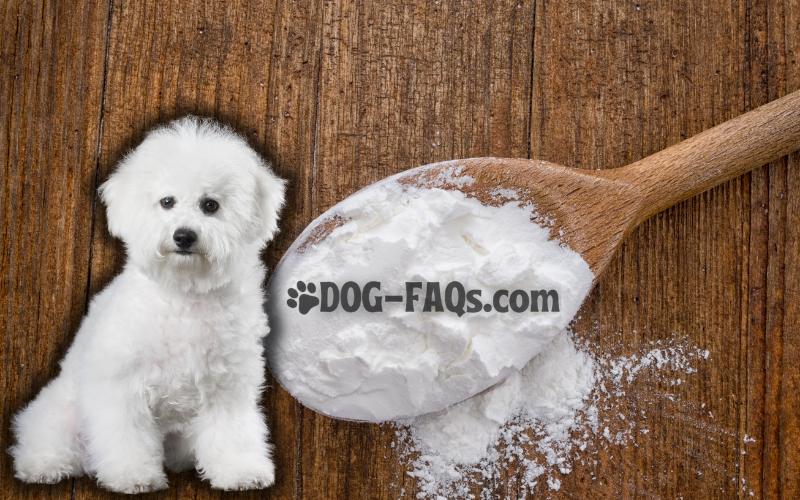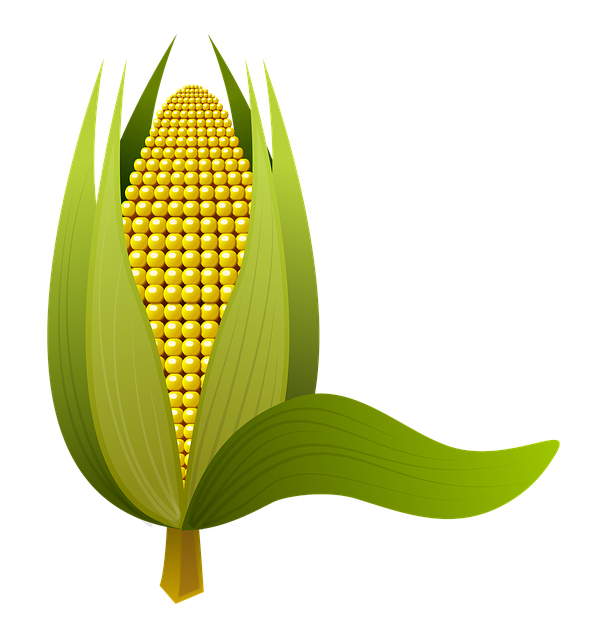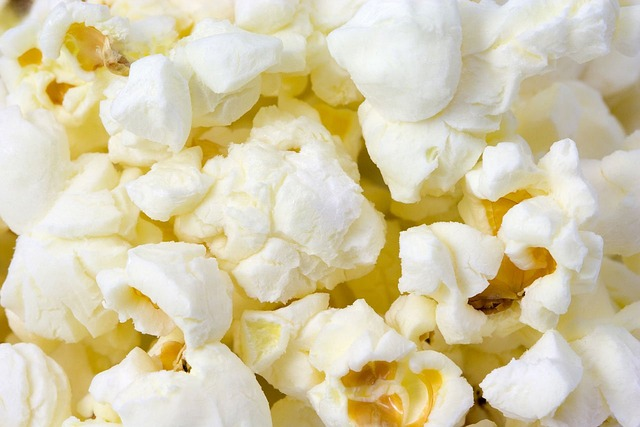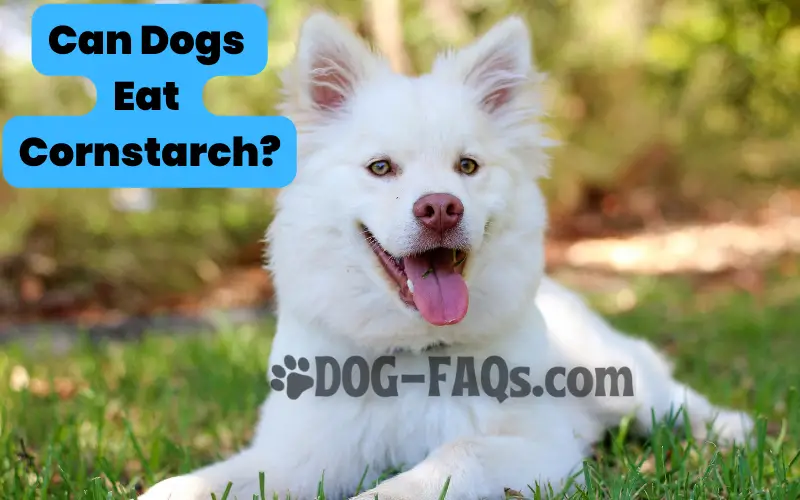Have you ever wondered if your furry companion can enjoy dog treats made of cornstarch? With all the conflicting information, it’s tough to know what’s safe for our dogs. Well, I’m here to tell you that in 2023, we’ll have all the answers! In this article, I’ll provide everything you need to know about feeding your pup cornstarch – from the benefits and risks of doing so to how much is okay. So read on and rest easy knowing that by the end of this article, you’ll be an expert on canine nutrition!
Let me start by saying: contrary to popular belief, feeding your dog cornstarch is not always harmful. While some experts claim cornstarch can cause digestive issues or even obesity in pets, with proper precautions, it can be part of a balanced diet for certain pups. But before discussing any further details regarding cornstarch consumption among pups, let’s first take a look at why they might want it in their diets in the first place.
A common misconception is that dogs don’t like sweet things; nothing could be farther from the truth! Dogs love sweets just as much as humans do – maybe even more – which explains why many people give them treats made from sugar-based ingredients or baked goods such as cornstarch. Not only does this add variety to their diets, but it also helps satisfy their cravings for something sweet without overdoing it on unhealthy sugars. Please keep reading and find out exactly how much is too much when giving Rex his favorite snack!
Can Dogs Eat Cornstarch?
The answer to this question is more complex than a yes or no. It depends on the dog’s reaction to certain foods, including cornstarch. While some pet owners feed their pooches with cornstarch-based food, others are wary of any potential allergic reactions that might occur for their pup’s health and safety.
The good news is that there aren’t many cases where dogs have had an adverse reaction from eating cornstarch in commercial pet foods. However, if your dog has known allergies to corn products, feeding them anything containing cornstarch could lead to irritation of the skin or other problems. Likewise, while it’s not particularly dangerous in small doses, too much starch can cause digestive issues like bloating and gas.
It’s always wise to consult your veterinarian before adding new ingredients to your canine companion’s diet – especially if they have preexisting conditions such as diabetes or kidney disease. That way, you can ensure that whatever you give your pup is safe and healthy for them and their stomach!
In nature, a dog would likely eat corn if it found it. Dogs have omnivorous diets, meaning they can eat plant- and animal-based foods. Corn is a common food source for dogs, as it is easily digestible and contains the necessary vitamins and minerals. If a dog found corn in the wild, it would likely eat it in its RAW form.
With all these considerations in mind, let’s discuss the common risks of feeding dogs cornstarch.
Common Risks Of Feeding Dogs Cornstarch
When it comes to feeding your dog cornstarch, there are common risks you should be aware of. Corn allergies in dogs can occur when your pup is exposed to corn protein and cause serious health problems. Dogs with food allergies may experience adverse reactions such as irritation of the skin, hives, vomiting, or diarrhea after ingesting a cornstarch product. Additionally, some dogs may have food intolerances which can result in digestive upset if their diet includes too many starchy foods like cornstarch.
It’s important to note that even though a particular breed of dog may not show signs of an allergic reaction immediately after eating something containing cornstarch, over time, repeated exposure could lead to symptoms appearing later on down the road. If you suspect your pup is sensitive to this type of starch, speak with your vet about the next steps.
By taking these precautions and monitoring any changes in behavior or physical appearance after giving them cornstarch products, you’ll be better prepared for any potential issues arising from its inclusion in their diet. With this knowledge under our belts, let’s answer the question:
Is Cornstarch Safe For Dogs To Eat?
Many pet owners may have heard about the potential dangers of feeding their canine companions treats made with cornstarch, but is there any truth to it?
- Corn flour contains many carbohydrates and fats that can cause digestive upset in some dogs.
- Excess oil from corn-based products can increase canine cholesterol levels, leading to weight gain.
- Dogs with gluten intolerance and sensitive stomachs should not be given treats containing even trace amounts of cornstarch, which could trigger an allergic reaction.
At first glance, it seems like cornstarch isn’t a safe option for our furry friends; however, when used in moderation, occasional dog treats made with cornstarch can be acceptable snacks as part of your pup’s diet. Just make sure you brush your dog’s teeth afterwards! Although we’ve now established that moderate amounts of cornstarch aren’t harmful to our four-legged friends, what nutritional value does it provide?
Nutritional Value Of Cornstarch
When deciding whether cornstarch is suitable for dogs, the primary question revolves around its nutritional value. Cornstarch has some essential nutrients in small amounts, but these are scarce compared to other human foods and protein-rich dog treats.
| Nutrient | Amount per 100 g | % Of Recommended Daily Intake (RDI |
| Vitamin B6 | 0.2 mg | 11% RDI |
| Iron | 1.1 mg | 6% RDI |
| Magnesium | 21 mg | 5% RDI |

Is Cornstarch Bad For Dogs
Have you ever wondered if your pup can safely eat cornstarch? We’ve all watched our four-legged friends chow down on some unusual foods, but is pure cornstarch one of them? Is it safe for dogs to consume this gluten-free, non-toxic food thickener? The answer may surprise you!
Cornstarch is generally used in all households, especially to make fried or baked goods. Cornstarch is not toxic to dogs, but eating too much could cause digestive issues such as vomiting and diarrhea. However, it’s important to note that cornstarch should never replace a balanced diet; instead, it can occasionally serve as an occasional treat. It’s also wise to check with your veterinarian before offering any new food item to ensure safety and avoid potential allergies.
When feeding your canine companion cornstarch, moderation is key. Dogs can digest small amounts of the starchy substance without issue – make sure that whatever form you give them does not contain added sugar or salt. To prevent overindulgence, give no more than 10% of their daily caloric intake in treats like cornstarch. With these precautions in mind, there’s no reason why sharing this tasty snack with Fido can’t be part of your routine!
But what if Fido is allergic to corn in the first place? Some dogs are allergic to corn, and others are allergic to corn starch because it has been processed.
Health Benefits Of Cornstarch For Dogs
Cornstarch is a highly digestible carbohydrate and can provide much-needed energy to your pup if they’re tired or lethargic. Additionally, because it doesn’t contain gluten like other grains, it can be an ideal alternative for pets with sensitivities or allergies. Plus, since cornstarch contains no fat and few calories, it won’t cause weight issues either.
Cornstarch, a common household ingredient, is not suitable for dogs. It has low nutritional value and no beneficial vitamins or minerals. Furthermore, it does not contain any beneficial proteins, fats, or carbohydrates that a dog needs for a healthy diet. As a result, cornstarch should not be used as food for dogs, and if it is accidentally consumed, it should be done in small amounts.
Finally, cornstarch has several external applications too. It can act as a gentle shampoo when applied directly onto their coat and may even help reduce shedding in certain breeds. Cornstarch is also one of the ingredients found in many commercial dog foods today, so chances are you’re already providing your pet with at least some amount of this beneficial starch without realizing it!
Cornstarch has demonstrated its internal and external value for our canine companions – but how should you feed it to them?
How To Feed Cornstarch To Your Dog?
Feeding your pup cornstarch is a great way to provide them with its health benefits. But before you start serving up this starchy snack, there are some things you should know about how to feed it to your four-legged friend best. With just a few simple steps and knowledge of what’s safe for dogs, your pup can enjoy all the perks of eating cornstarch.
First off, when feeding your dog cornstarch, make sure to keep in mind its size. Too much of any food can lead to an upset stomach or even more serious issues, so be mindful of portion sizes. Most dog treats contain only small amounts of starch. However, if you want to obtain cornstarch separately, look for brands specifically designed for canine diets, as they usually offer pre-measured options that make overfeeding less likely.
Additionally, watch out for products containing added sugar or salt, as these could irritate your pup’s sensitive skin under the furry coat!
When deciding how often your pup should consume cornstarch consider their activity level; active pups tend to require more energy than those who aren’t quite as playful, which means they may need slightly larger portions compared to less energetic breeds. However, no matter their lifestyle, it’s always important not to exceed recommended daily allowances – if in doubt, check with your vet first!
Allergies are also worth considering; while many dogs have no negative reactions to starch-based ingredients, some may experience reactions such as sneezing or itching after consuming certain foods. It’s therefore important to monitor their behavior closely whenever introducing new foods into their diet – including cornstarch!
Allergic Reactions To Corn-Based Ingredients
When it comes to feeding your pup, it’s important to consider any potential reactions from consuming items containing corn-based ingredients. If your dog is allergic to corn, there is a risk of adverse food reactions when your pet consumes a treat with cornstarch or corn flour.
Some common signs and symptoms of an allergy include:
Digestive problems can range from vomiting or diarrhea to abdominal pain or lack of appetite.
Skin irritation: This may manifest as redness, itchiness, sores, hives, or swelling in the area where the allergen was consumed.
In addition to these physical symptoms, dogs may also experience behavioral changes such as pacing or restlessness due to discomfort caused by their allergies. It is best to avoid giving your dog baked goods with a high amount of cornstarch, like muffins and cookies. Corn kernels and corn starch found in other foods should also be avoided to minimize the chance of adverse effects on their health.
It’s important to watch for any allergic reactions when introducing new food into your pup’s diet; overfeeding them treats or dog food containing cornstarch can lead to unpleasant side effects, which could require medical attention. Transitioning carefully and slowly will ensure that you don’t overload their system with something they’re not used to eating–and always consult your vet first!
Over-Feeding Your Dog Treats Or Dog Food Containing Cornstarch
Overfeeding your pup treats or dog food containing cornstarch could lead to weight gain and other health issues due to the high amount of carbohydrates in this food item. While occasional dog treats containing cornstarch won’t hurt your pup, excessive feeding should be monitored closely as it may cause gastrointestinal upset.
When considering adding more treats to your furry friend’s diet that contain cornstarch, keep the following things in mind.
First, check the nutritional label carefully for any ingredient that may trigger allergies in your pet before purchasing a product. Second, look at the serving size suggested on the package; if it’s too much for your pup, adjust accordingly.
Lastly, consider giving fewer treats but ensuring they are nutrient-dense so that you know your pup gets all the essentials from their snack time!
Remember, moderation is key when introducing new foods into your pup’s diet – including snacks made with cornstarch! Keep close tabs on how many treats you give daily, and always consult with your veterinarian if anything unusual arises about their eating habits or behavior. With proper monitoring and care, occasional treats made with cornstarch can make a tasty addition to mealtime fun without putting Fido at risk of overindulging!

How Do Dogs React To Eating Cornstarch?
When feeding our furry friends, we always want to ensure they are safe and healthy. Many pet owners wonder if cornstarch is a suitable snack for their pups. To answer that question, let’s look at how dogs react to eating cornstarch and their potential allergies to consuming this food.
One example of an adverse reaction from eating cornstarch can be seen in a case study involving two Rottweilers who ate large amounts of uncooked cornstarch mixed with kibble. After ingesting the mixture, both dogs exhibited respiratory irritation, including coughing, wheezing and difficulty breathing. Additionally, their fur began to absorb excess oil due to the high fat content in the mixture, which caused further skin irritations.
Though not all cases will result in such extreme reactions, dog owners must be aware of any potential risks before giving their pup anything new or foreign to eat. Regarding dietary safety, consider talking to your vet before offering your pooch some popcorn or snacks containing starch. If you do decide you want your pup to try out something like cornstarch as a treat, start by only giving them small amounts at first while keeping an eye on their behavior afterwards for any changes or allergic reactions.
If your dog seems uncomfortable after eating cornstarch or shows skin irritations like redness or excessive itching, stop using it immediately and contact your veterinarian immediately for further advice and treatment options. By being mindful about what foods we give our canine companions and monitoring them closely for any adverse effects afterwards, we can ensure that our four-legged family members stay healthy and happy!
Is Cornstarch Safe For Dogs’ Skin?
Considering whether cornstarch is safe for dogs’ skin, it’s important to consider that some people have used the product as a shampoo. But can you safely use this on your pup?
The answer is more than a simple yes or no. Cornstarch itself is relatively safe when ingested in small amounts and typically doesn’t cause any serious harm. However, if it gets into the eyes, it may lead to irritation. So while using cornstarch directly on your dog’s skin might not be extremely hazardous, there are still some things to be aware of before trying it out.
First, many vets suggest avoiding using cornstarch because it could clog up pores if left on too long and that can lead to dry skin. Additionally, since cornstarch has a drying effect, overdoing it could leave their coat feeling rough and brittle instead of soft and fluffy. Therefore, moderation is key—if you decide to try it, make sure you don’t apply more than necessary and always watch for signs of discomfort (such as excessive itching or irritated skin).
Ultimately, taking extra precautions with our canine companions should always come first! If you want to experiment with cornstarch as an alternative shampoo, proceed with caution by testing it out on a small area first and monitoring reactions afterwards. With all these factors in mind, let us now discuss how to apply cornstarch correctly onto dogs’ skin.

Applying Cornstarch As Dry Shampoo On Dogs’ Skin
Moving on from whether cornstarch is safe for dogs’ skin, let’s talk about applying it as a dry shampoo for a dry bath, why not? Dry shampoos are great options when you don’t have time to give your pup a full bath. But can you use cornstarch instead?
The answer is yes! Cornstarch makes an excellent and affordable dry shampoo that won’t harm your dog’s fur or skin. All you need to do is sprinkle some onto Fido’s coat and brush it until it is completely distributed across their fur. This will absorb excess oils and leave them looking clean and smelling fresh! It also helps reduce shedding by reducing static cling in their coat.
Cornstarch requires more brushing than other commercial dry shampoos, but it’s worth it if you want to save money and keep your pup healthy too! Just be sure to monitor closely how much you apply – too much could lead to clumping, which may be difficult to remove without water. Also, ensure never to get into Fido’s eyes or nose, as this can cause irritation. With these tips in mind, using cornstarch as a shampoo should help you provide quick relief between baths while keeping your pup happy and healthy.
How to do it?
Grab a sprinkle container filled with pure cornstarch (+ some baking soda if you want) and your dog brush to begin. Use the brush to detangle any dead hair, dirt and debris from your pup’s fur – go against the grain for optimal results. Generously sprinkle the cornstarch onto the fur, rubbing it into the skin until it fully absorbs. Make sure it goes down to the skin and isn’t just sitting on top of the fur. This mix absorbs excess oil from a dog’s furry coat; this can help your dog to remain clean for longer periods. Dog Grooming from A to Z!
Frequently Asked Questions
How Much Cornstarch Should I Give My Dog?
When it comes to feeding your pup, you want to ensure they get the best nutrition. But when it comes to cornstarch, can dogs eat it? And if so, how much should you give them? Let’s take a look at what you need to know in 2023!
First, dogs can safely eat small amounts of cornstarch as an occasional treat. Cornstarch is high in carbohydrates and low in nutrients; however, it won’t hurt your dog if fed correctly. It’s important to note that too much could lead to stomach issues like bloating or gas. That being said, plenty of other healthy treats for your pup offer more nutritional benefits than cornstarch alone.
How much should you feed your pup? The amount varies depending on the size of your pet. Still, generally speaking, the recommended serving size is around one tablespoon per day for smaller breeds and two tablespoons per day for larger breeds. Of course, always check with your vet before making any changes to your dog’s diet – even if those changes involve something as minor as adding some extra cornstarch into their meals.
Moderation is key regardless of the type of food you decide to give your pup. Too much of anything can cause digestive problems and interfere with their health and well-being – so always keep this in mind when deciding whether or not to add cornstarch to their routine. These rules apply no matter what type of food we’re talking about!
Are There Any Breed-Specific Risks Associated With Cornstarch Consumption?
Are there any breed-specific risks associated with cornstarch consumption? This is an important question when considering feeding your pet friend food that may not be part of their regular diet. Certain breeds might have different sensitivities or allergies to foods like cornstarch, so it’s best to check with your vet before introducing anything new into the mix.
To start, we must understand what cornstarch is and how it can impact a dog’s digestive system. Cornstarch is made from processed carbohydrates derived from maize, ground down into flour. Because dogs don’t digest carbohydrates as well as humans, they could experience stomach upset if too much starch is consumed at once. Knowing exactly how much you should give your pup before introducing them to this product is important.
It would be best if you also considered potential allergens within the ingredient list since some breeds are more sensitive. If your pet has a known allergy or intolerance for grains like wheat, barley or rye, then you should steer clear of giving them cornstarch as these grains are often used in production. Additionally, some dogs may be intolerant of other ingredients added during processing, including preservatives and flavorings, so always double-check the label on the package, just in case!
Overall, while cornstarch can provide valuable energy and nutrition for our canine companions, caution should still be taken when deciding whether or not it’s safe for them to consume. Always consult your veterinarian first about any breed-specific concerns regarding cornstarch consumption – better safe than sorry!
Are There Alternatives To Cornstarch For Dogs?
The age-old adage goes, “A dog is a man’s best friend.” While that may be true, it can still be tricky to know what foods are safe for them to eat – including cornstarch. So, when asking whether there are alternatives to cornstarch for dogs, it’s important first to understand the risks associated with this food item.
Cornstarch is generally considered non-toxic and not harmful if consumed in small amounts by most breeds of dogs. However, as with any human food, too much consumption can cause an upset stomach or even lead to pancreatitis over time. Additionally, some breeds have unique sensitivities or allergies that could make consuming cornstarch dangerous. That being said, several alternatives available on the market today provide similar benefits without risking potential health issues down the road.
One alternative is arrowroot powder, which has many of the same properties as cornstarch but has fewer calories and added fiber content. Rice flour is also a good option since it contains fewer carbohydrates than traditional wheat flour and adds more nutrients, such as vitamins B1 and B3, into your pup’s diet. Lastly, tapioca starch provides a great source of dietary fibers, which help regulate blood sugar levels while providing additional energy from its complex carbohydrate content.
No matter what you choose for your pup, always consult your vet before introducing anything new into their regular diet; this will ensure they get all the nutrients needed without risking their health!
What Are The Long-Term Effects Of Feeding My Dog Cornstarch?
Knowing the possible long-term effects of feeding your dog cornstarch is important as a pet owner. While there are alternatives for dogs that might be better suited for their dietary needs, you may still want to consider the consequences of giving them this food item in the future. Luckily, we’ll cover what you need to know so you can make an informed decision.
First and foremost, cornstarch is not toxic or poisonous to dogs. However, like any other human food item, moderation is key when introducing it into their diet, as too much can lead to digestive issues such as upset stomachs or diarrhea. Additionally, because cornstarch contains carbohydrates that convert into sugar in their bodies, it could also cause weight gain if consumed regularly over time. This means that while a small serving size might be okay occasionally, repeated exposure should be avoided.
The best way to ensure your pup remains healthy is by sticking with high-quality and nutritionally balanced dog food specifically formulated for their breed and age group. If you do decide to give them some cornstarch from time to time as a treat, then making sure it doesn’t exceed 10% of their total daily intake would be ideal. They must also have access to plenty of fresh water since eating this type of food can increase thirst due to its higher starch content.
Understanding the potential risks associated with including cornstarch in your pet’s diet will help keep them safe and happy. Remember that moderation is key; always opt for premium quality kibble or, even better, B.A.R.F. (Biologically Appropriate Raw Food) whenever possible!
B.A.R.F. is mostly protein-rich foods with little to no processing, gluten-free without too many carbohydrates that can improve a dog’s health. Also, your pet’s coat will shine, and after some time on this diet, you won’t be afraid of any food allergy. B.A.R.F. should be all dogs’ staple food, but for most dog owners, kibble is easier to access and feed, so guess which is the staple food for most doggies worldwide.
What Other Corn-Based Ingredients Should I Avoid Feeding My Dog?
Easing into the topic of what other corn-based ingredients we should avoid feeding our dog, I want to emphasize why it’s important to do this. Dogs are often considered family members and deserve to be cared for in a way that ensures their health and well-being. Knowing which food items may cause them harm is critical for any pet parent looking out for Rex’s best interests!
When considering different kinds of cornstarch alternatives like corn syrup, maltodextrin, or high fructose corn syrup, it’s important to remember why these foods might not be safe for your pup. Corn syrup can contain large amounts of sugar and artificial sweeteners such as xylitol, which are toxic to dogs if ingested in large quantities. Maltodextrin is also known to irritate sensitive tummies, so even though it’s not directly poisonous, it shouldn’t make up a major part of your furry friend’s diet either. Lastly, high fructose corn syrup has been linked with an increased risk for obesity when consumed regularly by humans and animals.
Corn flakes and gluten-containing grains like wheat are foods you should avoid giving to your dog.
The bottom line? If you plan on giving treats or snacks made with processed starch (cornstarch included), it’s best to keep them few and far between. And opt for natural options that don’t contain added sugars or preservatives, like raw fruits and veggies! This way, you’ll ensure that your pup stays healthy while occasionally getting some delicious rewards.
Can Cornstarch Kill a Dog?
No, cornstarch cannot kill a dog. Cornstarch is generally not harmful to dogs and is a dietary supplement in some pet foods. However, if a dog eats a large amount of cornstarch, it could cause digestive issues, as I mentioned above. However, a dog can die if it has a corn allergy and you feed it cornstarch. Don’t worry, though; corn allergy doesn’t appear to a dog often.

Can Dogs Eat Corn Flour?
Corn flour is made from grinding whole kernels of dried corn into a fine powder. Corn flour is a safe ingredient to pad out many dog foods, but its low nutritional value makes it an unsuitable option. There are also concerns about corn allergy, as corn flour is even more allergenic for dogs than cornstarch. This flour has a much lower nutritional value for your pup than other grains like wheat, rice and oats.
It’s also worth noting that some breeds may be more prone to developing celiac disease after consuming gluten products, such as those found in most corn flour. For these reasons, you should avoid feeding them foods with high levels of this grain-based product unless approved by your veterinarian first.
In addition to avoiding giving your dog foods containing corn flour, you should also avoid giving them popcorn, either cooked or uncooked, due to its potential choking hazard, which could result in serious injury or death to your pet. Instead, choose healthier treats like fruits and vegetables (minus onions). These safer alternatives don’t have the same risks associated with consuming potentially harmful ingredients in many commercial dog foods today.

Can Dogs Eat Popcorn?
Can dogs eat popcorn? Well, the short answer is yes! Like humans, many dogs love to snack on crunchy and air-popped popcorn. But it’s important to remember that popcorn should only be given as a treat in moderation, not part of their regular diet.
Popcorn is okay for your pup, but there are certain types of popcorn that you should only feed them partially. For example, flavored or salted popcorn would be best left off the menu since too much salt can lead to dehydration and other health issues. Also, kernels that haven’t popped yet could pose a choking hazard, so ensure every kernel is fully cooked before serving.
Besides popcorn, cornstarch is another food item made from whole corn processing that can sometimes appear in many foods, including sauces, gravies and even desserts. It’s commonly used as a thickening agent when making various recipes, so if you have an old container or know someone who keeps one in their sprinkle cabinet, keep it away from your pup at all costs! Eating uncooked cornstarch can cause digestive upset with common symptoms such as vomiting and diarrhea.
Conclusion
It’s no exaggeration to say that feeding your dog cornstarch can be risky! While it may seem like an easy and safe way to give them a treat, there are some potential long-term risks associated with its consumption. That’s why all pet owners must understand the implications of feeding their beloved four-legged friends something potentially dangerous.
The good news is plenty of safer alternatives – from healthy vegetables to specially designed pet treats. So if you’re looking for a snack or treat option for your pup in 2023, research first and avoid any ingredients containing cornstarch. Your furry friend will thank you later!
Finally, let this serve as a reminder that our pets rely on us humans to make sure they stay safe and happy. By understanding what foods we should and shouldn’t feed them, we’re taking an essential step towards providing the best possible care for our furry family members.
Read Before You Feed!
Can dogs eat grits? The truth will surprise you! 2023 Full Beginners Guide
Can Dogs Eat Pop Tarts? 15+ Potential Risks If You Feed Them!
Can Dogs Eat Nectarines? 20+ Fruitful FAQs Answered!


